
My old friend Sparky, on an early Proterozoic beach in southeast Wyoming.
West of Laramie, Highway 130 crosses the rolling grasslands of the valley bottom for about 30 miles and then begins to climb, winding up through the Medicine Bow Mountains, through conifer forest and quaking aspen, past meadows and small lakes, past streams lined with yellow, blue and red wildflowers. Polished boulders lie scattered about, sparkling in the sun. For ten miles the road climbs. The meadows get bigger, the trees smaller. There are more and more boulders and outcrops until finally the landscape is dominated by rock. Most prominent is the Snowy Range—a wall 1500 feet high and seven miles long—a beach turned on its side—5600 feet of sand transformed into rock.
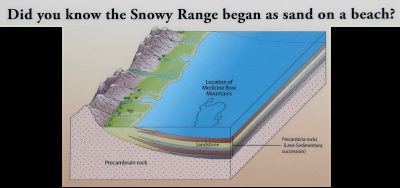

If we were to travel in time as well as space, and visit southeast Wyoming two billion years ago (early Proterozoic time), we would be standing on the southeast coast of a young North America. Looking northeast, we would see mountains in the distance. Erosion was rapidly wearing them down, being unimpeded by vegetation (land plants wouldn’t appear for another 1.5 billion years). Streams carried massive amounts of debris to the coast where they dropped their loads, building deltas and beaches.Of course this tranquil coastal scene was not to last, the Earth being what it is—dynamic.Transformation
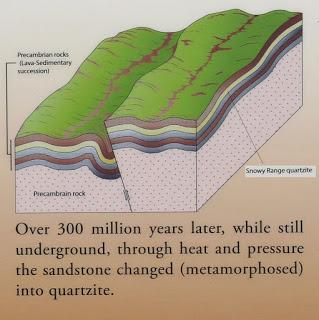
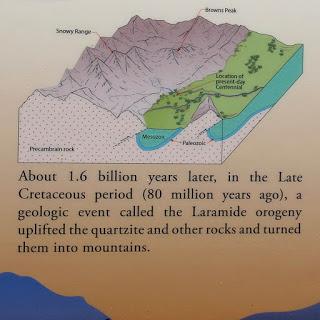
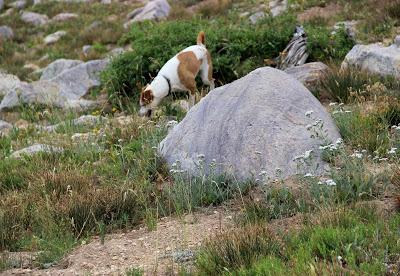
Emmie is fascinated by early Proterozoic rocks.
We won’t find any shells or seaweed or dead fish on this beach—two billion years ago was much too early for complex life—but our beach-combing will still be productive. Even though the quartzite is quite ancient, the metamorphism was low-grade (“only” 200-300º C), so structures and features of the original sand deposits are still visible! These are some of the clues geologists use to reconstruct the environment here two billion years ago (of course they don’t always agree).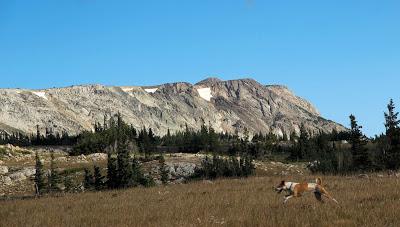
The Snowy Range is mostly Medicine Peak quartzite, which is highly resistant to erosion. That’s why the Range stands above the rest of the Medicine Bow Mountains.

Original beds (layers) are still visible (left of center, beyond lake; click on image for a better view).
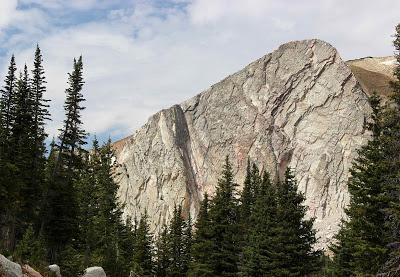
On the west side of Mirror Lake, beds of sand-turned-to-rock are tilted to nearly vertical.
Fine-scale sedimentary structures are common—such as bedding, cross-bedding, and layers of pebbles. Various minerals add color. Much of the rock is polished, for as recently as 12,000 years ago, glaciers were grinding their way across this area. Beauty combined with views into an ancient world keep me looking at rock after rock after rock.Often the quartzite appears striped—showing layers of sand deposited at different times, under different conditions, or maybe from a different source.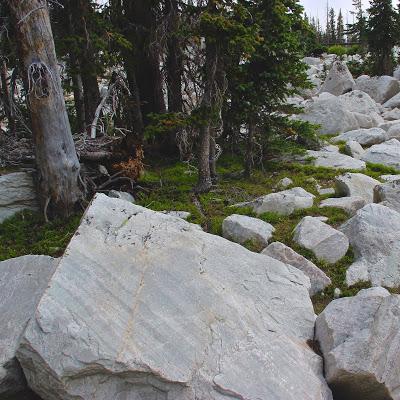
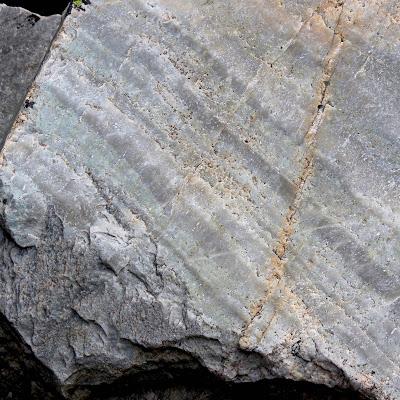
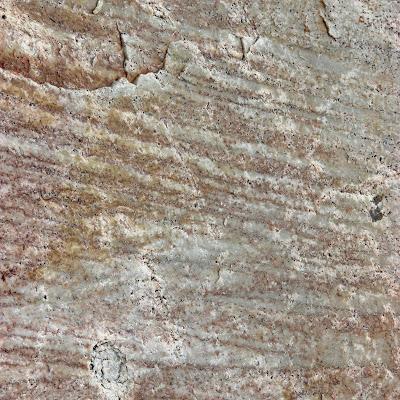

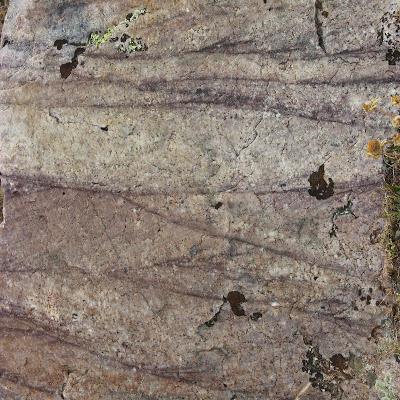
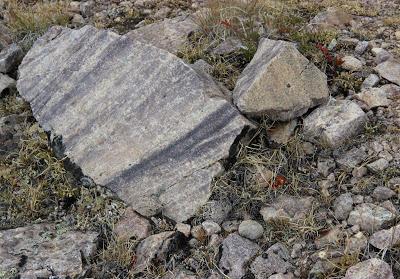
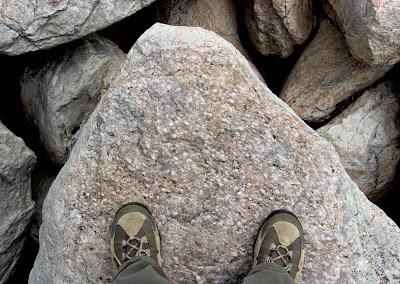
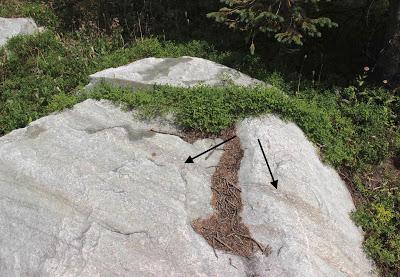
Arrows point to a pebble layer in cross section.
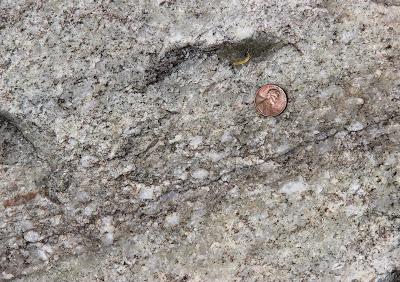
Closer view.
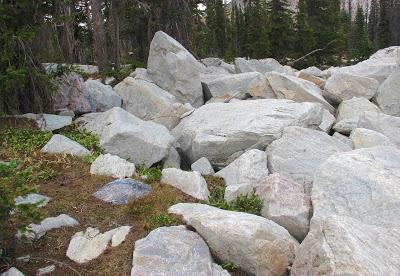
See that dark one?

It’s quartz pebble conglomerate!
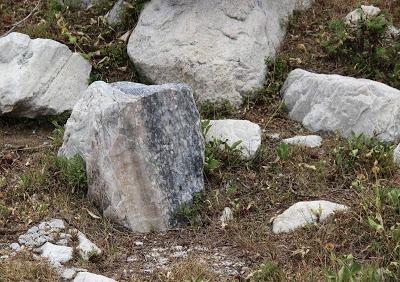
An even better one!! It's so hard to quit searching ... just like in beach-combing.
The Snowy Range is about 45 miles west of Laramie, via Wyoming Highway 130. Stop at Libby Flats and the overlook to the west for great views, invigorating mountain air, and a healthy dose of geological edification.

(10,847 feet above sea level)
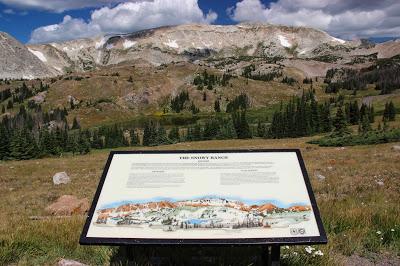
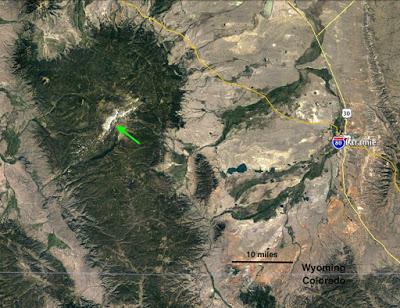
Snowy Range in the Medicine Bow Mountains. Arrow marks pullouts with geological signs (Google Earth).
Sources (in addition to links in post)Hausel, WD. 1993. Guide to the geology, mining districts, and ghost towns of the Medicine Bow Mountains and Snowy Range Scenic Byway. Wyoming State Geological Survey Public Information Circular No. 32.Houston, RS, and Karlstrom, KE. 1992. Geologic map of Precambrian metasedimentary rocks of the Medicine Bow Mountains, Albany and Carbon counties, Wyoming. USGS Miscellaneous Investigations Series Map I-2280. PDF
Karlstrom, KE, and Houston, RS. 1984. The Cheyenne Belt; analysis of a Proterozoic suture in southern Wyoming. Precambrian Research 25:415-446.
Lanthier, LR, 1979. Stratigraphy and structure of the lower part of the Precambrian Libby Creek Group, central Medicine Bow Mountains, Wyoming. Contributions to Geology, University of Wyoming. 17:135-147.
Mears, B, Jr. 2001. Glacial records in the Medicine Bow Mountains and Sierra Madre of southern Wyoming and adjacent Colorado, with a traveler’s guide to their sites. Wyoming State Geological Survey Public Information Circular No. 41.
